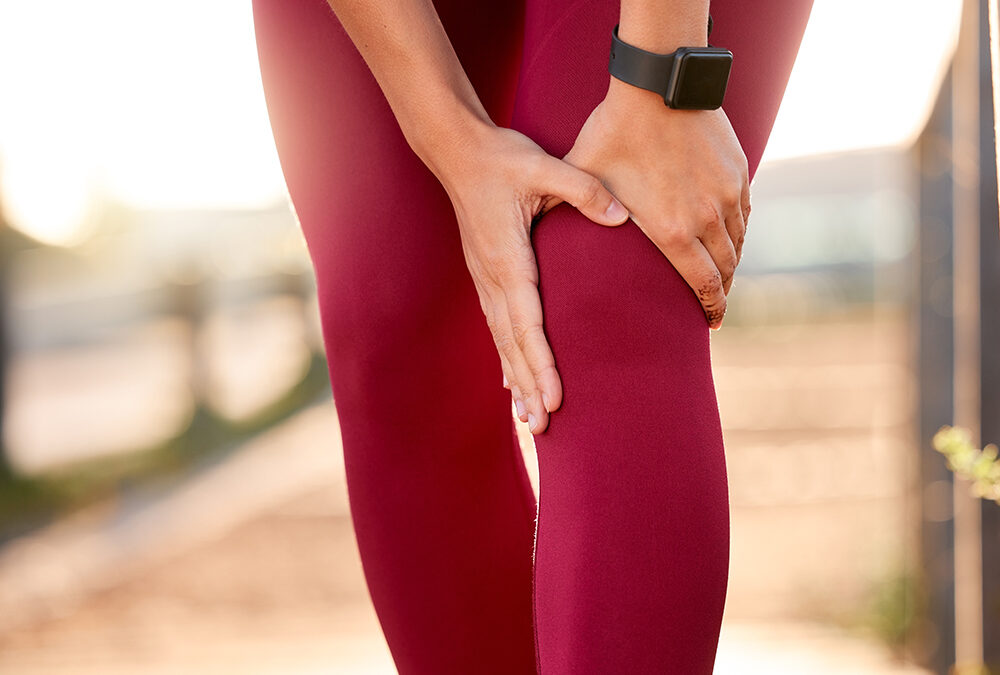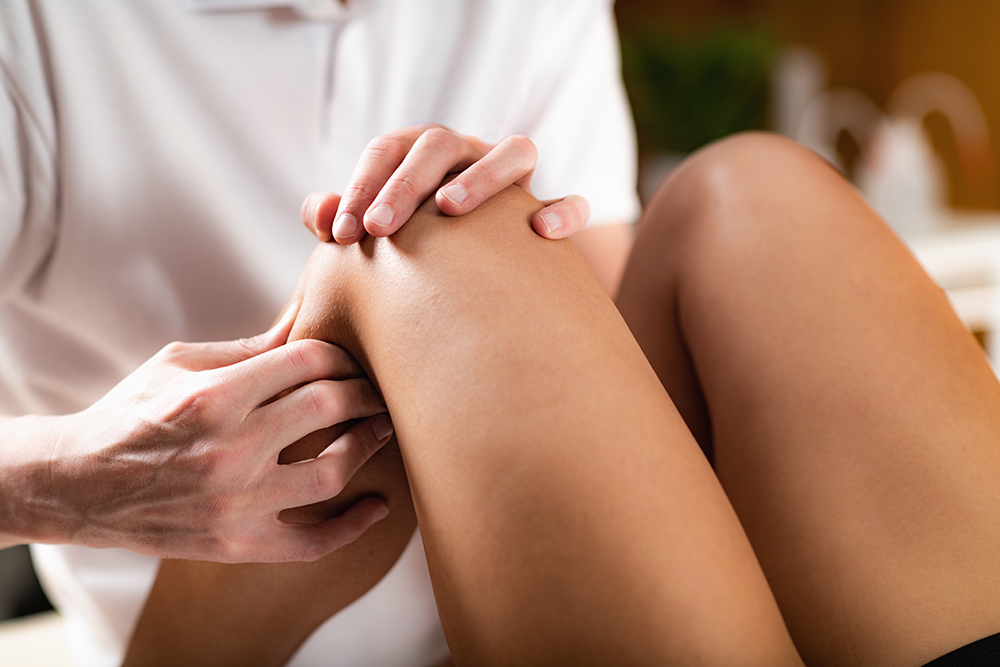Contents
Pain is unavoidable sometimes. Since we all know that we’re bound to feel aches throughout our body every now and then, it’s easy to brush it off as no big deal, especially when there are no physical signs of concern, such as swelling. But even if you don’t have any swelling from an area that’s causing pain, it’s still important to address the potential issue.
Your knees endure a lot on a daily basis, from carrying your body weight as you walk to crouching down to pick up clutter in your bedroom. So when you feel knee pain, such as on the inside of your knee, it can interfere with your ability to carry out everyday activities. Even if there’s no swelling, there are still several potential reasons for the pain that should be addressed by a health care provider.
We’ll discuss a variety of reasons that you could be feeling pain on the inside of the knee with no swelling. Then we’ll go over a few treatment options that are worth trying out, including a few that we offer at Lattimore Physical Therapy.
4 possible reasons for pain on the inside of the knee without swelling
When we talk about the inside of the knee, we’re referring to the medial compartment that faces the opposite knee. There are a number of injuries or medical conditions that can affect the medial knee, causing pain without swelling. By learning about the different possible causes for the pain, you can be more informed about the safest and most effective treatment options to alleviate the symptoms and restore the knee’s function and mobility.
If you’re experiencing persistent or worsening pain on the inside of your knee, it’s time to book an appointment with your doctor. They can evaluate your symptoms and run diagnostic tests to determine the cause of your issues.
Here are four potential diagnoses for pain on the inside of the knee without swelling:
- MCL injury — Your medial collateral ligament, or MCL, is a piece of connective tissue that’s located at the bottom of your thighbone and runs down to the top of your shinbone on the inside of your knee. It’s possible to sprain the ligament, meaning that it was overstretched due to excessive force, such as playing a contact sport. Minor or Grade 1 MCL sprains can cause pain without swelling.
- Meniscus tear — There’s a pad of cartilage on the inner and outer parts of your knee, called a meniscus. Menisci work as shock absorbers and help keep the joint stabilized. It’s possible to tear the meniscus on the inside of your knee. If there’s pain but no swelling, it’s likely that a piece of the cartilage got caught in the joint. A meniscus tear can occur when you forcefully twist or rotate your knee, which is why it’s common among athletes who have to pivot quickly, such as basketball players.
- Pes anserine tendinitis — There are three tendons along the inside of your lower knee. They attach your shinbone to your hamstring muscles and are used to help you bend your knee. When the tendons are overused, they can become inflamed, leading to pes anserine tendinitis. The pes anserinus is where the three tendons meet. Inner knee pain is the most common symptom, but the pain can also radiate to the thigh.
- Osteoarthritis — Of the many types of arthritis, osteoarthritis (OA) is the most common. It’s a degenerative condition that causes the cartilage in the knee joint to gradually break down over time. At the beginning stages of OA, it’s possible to experience pain and stiffness on the inside of the knee without any swelling.
Treatment options for inner knee pain without swelling
Even if your knee isn’t swollen, any pain surrounding the joint can interfere with your overall quality of life. It can be painful to carry out everyday movements, such as getting into a car or standing up from a chair. That’s why proper treatment is important. Once you receive a diagnosis from your doctor, they’ll work with you to determine the best course of action to treat it.
There are treatment options worth exploring when you’re feeling inner knee pain. While some of the options can be done at home through self-care, others may require the assistance of a physician or physical therapist. It’s important to note that these options work best when combined, not just one by itself.
Here are options for alleviating inner knee pain without swelling:
- RICE — If you experience a knee injury, such as an MCL sprain or meniscus tear, it’s essential to immediately carry out four steps at home. RICE stands for rest, ice, compression and elevation: Rest your leg to prevent further stress on the injured tissue. Apply ice to the inner knee to numb the area for reduced pain. Then, compress it with a bandage to prevent potential swelling. Elevating your leg above your heart can reduce swelling and advance the recovery process.
- Medication — Ask your doctor about taking pain medication to temporarily alleviate your knee pain at home. Common over-the-counter medicines are ibuprofen and naproxen sodium. Depending on the severity of your symptoms, you may be given a prescription for a stronger option.
- Cream — Alongside oral medication, you can also try topical nonsteroidal anti-inflammatory creams that can be applied directly to the area. There are different ingredients that you can search for while shopping for one, such as lidocaine to numb your knee or diclofenac, which helps reduce inflammation.
- Exercises — One of the best courses of action for treating inner knee pain is with the right strengthening and stretching exercises. Your physical therapist will guide you through safe and effective exercises based on the likely cause, severity of symptoms and your physical capabilities. They can show you exercises to strengthen the affected muscles for increased joint stability and function, such as straight-leg raises. There are also stretches for increased range of motion and flexibility, like quadriceps stretches.
- Manual therapy — Sometimes, hands-on treatment is the best way to alleviate knee pain. Manual therapy involves a physical therapist using their hands to manipulate the affected tissue. A common option for knee pain is joint manipulation. The goal is to improve the knee joint’s range of motion and reduce stiffness by gently moving it around in slow, repetitive movements to loosen up the tight tissue.
Find help for inner knee pain at Lattimore Physical Therapy
If your knee pain has persisted for more than a week, don’t dismiss it, even if there’s no swelling. Letting inner knee pain go untreated for an extended period of time can lead to further damage that can interfere with your mobility.
At Lattimore Physical Therapy, we want to make sure that we have all the information needed to give you the best treatment possible. That’s why your first appointment with us will include an initial evaluation. We’ll examine your symptoms and assess your knee’s strength, range of motion and function. We’ll also ask you for any relevant information, such as your medical history. From there, we can dive right into your first treatment to get you moving toward recovery.
If manual therapy is part of your treatment plan, you’ve come to the right place. We have 30 therapists who have earned a Certification in Orthopedic Manual Physical Therapy (COMT), meaning that they specialize in treating neuromuscular skeletal disorders with manual therapy. There is one COMT in nearly every Lattimore clinic.
Contact our team today for more information or to schedule an initial appointment to address your knee pain.



